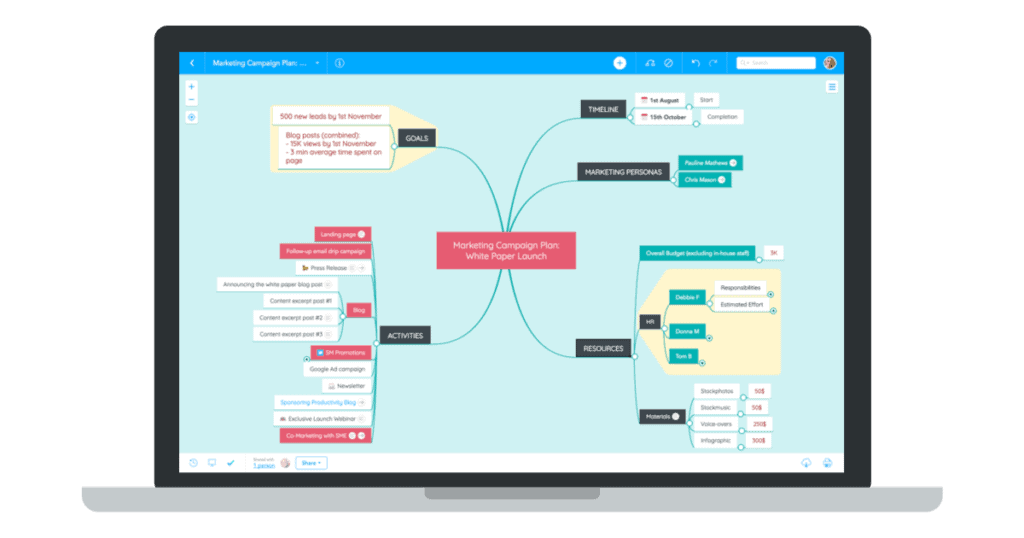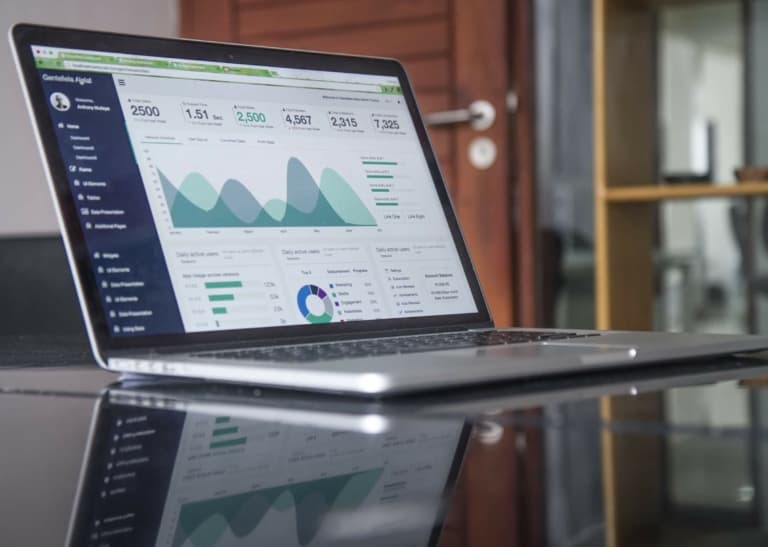Have you been experiencing drops in sales, drops in website traffic, or decreases in customer satisfaction?
These all indicate that your business is not performing at its full potential and most likely has a branding issue.
Branding relates to how you resonate with your audience. If you aren’t seeing your desired results, it means your audience doesn’t relate to your brand and what you are putting out there.
These issues could be the result of many things including problems with your website, the product line itself, or your sales methods and materials.
To fix these issues, you need to understand what you are doing that your target audience doesn’t like and how to fix it and what you are doing well and how to optimize that. You can find this out by performing a brand audit.
Even if your performance is good, it is essential to stay on top of your brand performance to stay competitive, innovative, growing, and successful and avoid becoming outdated or irrelevant.
What is a Brand Audit?
A brand audit is a detailed analysis of your company’s image and performance. It’s essentially a brand “health check” and shows how your brand is currently performing.
The audit will compare performance with your goals as well as with the performance of your competitors and the wider market.
A brand audit is essentially a brand "health check"
A brand audit establishes your brand performance by discovering strengths and weaknesses and perception of your brand. You can then align your strategy more closely with your goals and customer expectations.
When you perform a brand audit, you’ll also understand more clearly how you can differentiate yourself from your competition and take advantage of industry trends. All of which will help in making your brand more successful!
Why Perform a Brand Audit?
Brand audits are essential to understanding where your business stands in the market. They help you understand what you’re doing well and what could be improved.
This allows you to continuously improve your strategy helping to keep customers satisfied and keep your brand relevant in the market.
Performing a brand audit can help you understand the following:
-
Your position in the market and what improvement strategies should be developed.
-
Your customer expectations and if your products or services are aligned accordingly.
-
Your strengths and weaknesses.
-
Your brand sentiment.
-
What opportunities you could take advantage of and the major threats your business faces.

How To Perform A Brand Audit
Now that you understand why it’s important to perform a brand audit, use the following tips to help you complete your own brand audit.
Create A Brand Audit Framework
So how do you perform a brand audit? The first step of performing a brand audit is deciding what it will look at.
Will it look at mainly internal or external factors? Do you want to mainly understand how you are doing in relation to goals? Or do you want to focus more on how you’re doing in relation to your competition?
Looking at your strategic objectives can help to pinpoint exactly what you should be auditing.
List all of the topics to be covered and then outline how you will go about the process. For example, you could use a mind map with main categories to cover and lines off of those showing what under that category needs to be looked at.

Things to cover in a brand audit include:
- Your target market and your marketing plan to reach them
- Your strengths and weaknesses
- Your brand image, perception, value, and awareness level
- Industry trends and opportunities
- External threats
- Your website and analytics
- Your social media
- Your branding and advertising materials

Looking at your strategic objectives can help to pinpoint exactly what you should be auditing.
You may need to look at how your brand is functioning and performing internally and externally.
External performance refers to how your brand is performing in the market and how customers see your brand.
Internal factors look at how your company’s corporate strategy is performing and how efficiencies and staff motivation can be adjusted and improved to help the brand as a whole succeed.
Looking at internal and external factors will give a clear and extensive view of your brand. A combination brand audit, however, is time-consuming.
Areas to Audit
Most brand audits will analyze at least the following areas.
1. Brand and Advertising
Start by assessing how you’re currently portraying your brand through advertising materials and digital design.
Collect all current branded materials such as:
- Proposals
- Brochures
- Presentations
- Reports
- Ads
- Email templates
- Recruiting materials
- Trade show and event displays
- Social media page design
- Web page design
- Logos
Note inconsistencies in branding and compare materials that perform well with those that don’t.
Is it differences in design and copy that could be causing inconsistencies in results? Or could it be the medium being used?
If none of your branded materials are having a strong effect on customers, you may need to re-brand completely.
2. Website And Analytics
Examining your website analytics is a major part of any brand audit. More than 80% of consumers will search for products or services to meet their needs online.
Therefore, your website is highly important to your brand’s success and is where consumers will start to form a view of the brand.
Understanding the following will help in determining if your website is successful in attracting and converting your target customers or if your website branding is off and needs to be adjusted to gain those desired customers.
You can use Google Analytics to find and analyze the following data.

Website Traffic
Start your website audit by looking at website traffic.
Your website is the main source that people will use to learn about your brand and even the place that products will be purchased. Therefore, you want to ensure you’re driving a high amount of qualified traffic.
Begin by looking at traffic origin. What are the main platforms driving traffic to your website and which don’t send as much?
If you’re running campaigns to get web traffic from certain platforms such as from social media channels, are these campaigns converting and sending the desired amount of traffic? If not, what can be done to improve the amount of traffic sent?

Also, analyze the range of channels that drive traffic to your website. You need a diverse range of traffic sources.
Relying on one or two traffic sources means that algorithm changes and decreased reach can drastically hurt your traffic. See which work well at sending qualified traffic and why and which don’t and how you can adjust.
Finally, look at the demographics of the traffic such as visitor location, age, and gender. Are the visitors to your site your target customer?
If not, you’ll need to adjust and improve your strategy to ensure you are driving qualified traffic.
Bounce Rate
Next, look at your bounce rate. This is the percentage of visitors that visit your site and leave immediately.
You want a low bounce rate and a bounce rate over 50% should be looked into and fixed.
A high bounce rate indicates that something is wrong with your website which makes people leave quickly; maybe it is slow loading or the landing page is confusing, unappealing, or doesn’t provide useful information.
Conversion Rate
How many site visitors are completing your desired action? This could be conversion to a customer but could also include signing up for a newsletter, creating an account, or requesting info.
List your desired conversion activities and see which content is working best to get these conversions (for example, what is working best to get newsletter sign-ups) and what isn’t working and then adjust strategy accordingly.
Remember to check conversion rates over time, are they increasing or decreasing? What could be causing this?
Page Views
This will show how many times each page on your website was viewed over a certain amount of time. Which are viewed most and why could that be? And which are viewed least and why?
This helps show what content or products are most popular and which aren’t performing well.
Determine what is right with popular pages and wrong with pages with low page views and how to fix this (promote more, edit, or even drop the page.)
Relying on one or two traffic sources means that algorithm changes and decreased reach can drastically hurt traffic.

3. Social Media Platforms
Social data can provide you with data that isn’t available anywhere else. Like with your website, check your social media follower demographics.
If they don’t match your target audience, you’ll need to adjust your social strategy to effectively reach that audience.
Social data can also provide more info on exactly what products and content your audience likes. Posts promoting products or content with a high number of reactions, shares, link clicks, and positive comments indicate that they appeal to your audience.
Those with poor performance aren’t appealing to your audience. What can be done to improve products and content that don’t appeal? And how can you optimize the high performers?
4. Customer Sentiment
The next part of performing a brand audit is getting information and feedback from your customers. They are ultimately the ones that interact with your brand.

Customers have a lot of essential information on what you are doing well and what could be improved.
Some ways to get customer feedback include:
Running Polls
Ask one question per poll online or through your social media channels.
Using Online Surveys
Post links to these in pop-up ads on your website, through email, or on your social media profiles.
Offering an incentive, like 10% off their next purchase, can help increase the number of customers who complete the survey.
Asking Questions Over the Phone or Via Email
Directly communicating with each customer can improve the quality of results but is more time-consuming.
Some good questions to ask include:
How would you rate your overall experience using our website? What did you like? What could be improved?
Why did you decide to do business with us?
Why would you consider a competitor?
Have you been pleased with our customer service?
Use your quantitative data collection to help in forming questions as well.
For example, if you see from analyzing your website that you have a high bounce rate, then make sure to ask questions about your website and it’s landing pages; Why are your customers entering the page but then leaving straight away?
Net Promoter Score
You can also use these interactions with customers to determine Net Promoter Score. This is the percentage of customers that would speak highly of you and recommend your brand to others.

Ask the question “How likely are you to recommend us to others on a scale of 0 (not likely at all) to 10 (extremely likely.)”
Then subtract the percent of your ”promoters” or people who scored 9 or 10 from the percent of “detractors” or people that scored 0 to 6.
You want a net promoter score of at least 5%. Brands that perform the best get scores of 50%+.
Focus Groups
If you notice some things that are performing particularly badly, such as your website or customer service, you could choose a sample of customers to create a focus group.
Ask them to go through an activity such as navigating their way around your website or going through a customer service request and get them to note issues they encounter and how they would ideally like those to be fixed.

Once you notice problem areas, this is a great way to get direct feedback from customers on how they should be improved.
The information collected from customers adds useful qualitative data to all the quantitative analytics data.
This data provides a more complete view of how your brand is perceived and gives info not available from data such as knowing why people would use your brand over the competition and your customer satisfaction level.
5. Sales Data
Analyze the entire customer journey to discover specific areas that discourage your clients from purchasing or certain products that don’t perform well.
Once you understand those issues, you can fix them to offer a smooth customer experience from start to finish and products that are desirable.
This will not only help show problem areas but can highlight areas to exploit too.
6. Competitors
You should list your top competitors and analyze them. Competitor analysis helps to understand how competitors position themselves and how you can compete more effectively.
You can use competitor analysis tools or do your own research to discover and analyze the following about your competitors:
Their products and market share: how you can differentiate yourself and gain a larger share of the market?
Their sales tactics: what channels do they sell through and what is the sales process like from start to finish? Are they missing any opportunities that you could take advantage of?
Their marketing strategy: what is their website like? What types of content do they use? What advertising campaigns are they running?
Their content engagement level: what content appears to be popular on their website and social media pages and what doesn’t perform well? (Use the number of comments, shares, and likes to assess this)
Their strengths and weaknesses: use the above info plus anything else you think they do particularly well or poorly to create a list of strengths and weaknesses for each competitor.
Are there any common weaknesses that you could capitalize on to get a market advantage? Or is there something that everyone does well that you could improve on even more?
NEED HELP DECIPHERING WHAT ALL THAT DATA IS SAYING ABOUT THE STRENGTHS AND WEAKNESSES OF YOUR BRAND? WE CAN HELP.
Brand Audit Findings Report
Once you have completed collecting all the data you need, review and analyze it and then consolidate the information into core findings.
In your findings report, start by including your top three to five differentiating factors or “brand pillars”.
Use these to then help create a brand repositioning statement. This is a short and to the point statement outlining exactly what you bring to the market that nobody else does (similar to an elevator pitch.)
Next, you’ll need to use your findings to devise an action plan intended on fixing issues that you discovered and taking advantage of strengths and opportunities.
Should you hire an agency to do your brand audit or keep things in-house? 8 Signs You Need to Hire a Marketing Agency
Start by making a report outlining the issues you found, along with how you plan to fix them, the expected results, and a timeline of how long it should take to receive those results.
Then highlight the things you do well and how you can optimize them to get even better results and take advantage of opportunities in the market. Again, include expected results and a timeline.
Once your report and strategic plan are completed, you can begin putting the plan into motion. Be sure to monitor progress once all “fixes” are implemented by performing another brand audit.
Ensure this is done continuously, for example, you could conduct a quarterly brand audit along with weekly or monthly benchmark checks, to make sure you are on track, additional issues are being spotted and fixed, and all new opportunities are being taken advantage of.
In Conclusion
Think your company needs a brand audit but you don’t have the time or knowledge to complete one yourself?
Get in touch today to learn how Brand Hause can help you audit your brand and plan an effective re-branding and marketing strategy!

Struggling to find the perfect mix of form and function with your brand identity? Find out how a brand audit can help.







